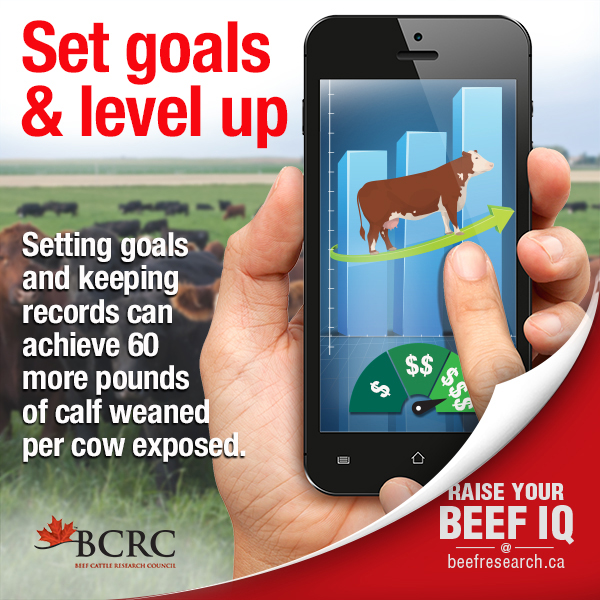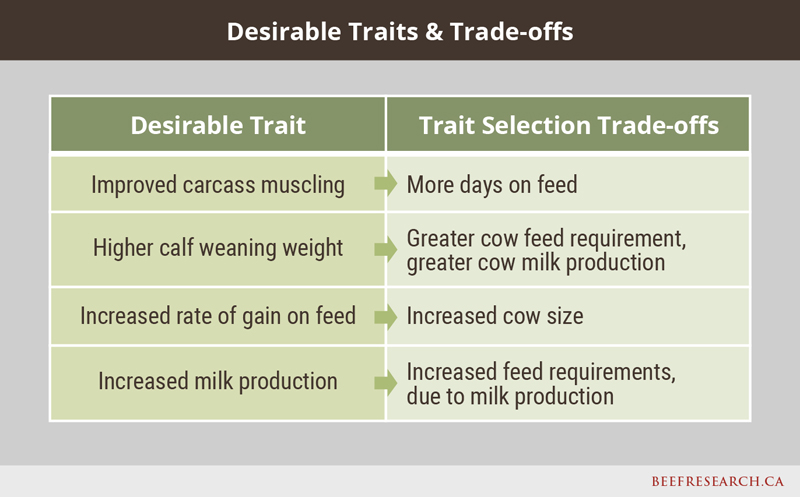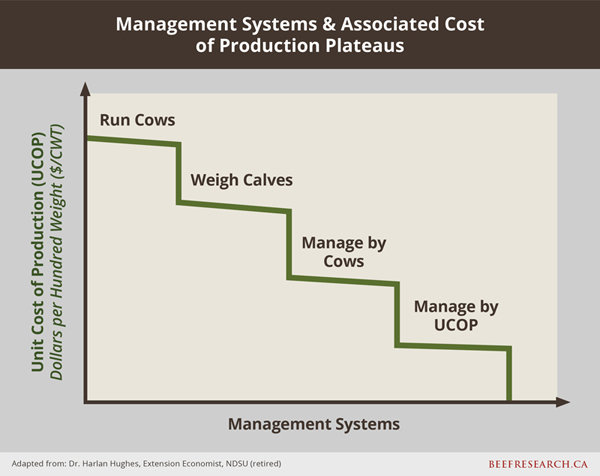Remarque : cette page web n’est actuellement disponible qu’en anglais.
Are you curious about which areas of your operation are excelling? Or which areas of your operation that might need some work?
Are you interested in record-keeping but not sure where to start?

Successful farm management begins with accurate and up to date records. The process of record-keeping allows the farm manager to collect and save data so it can be analyzed and used to make better decisions and turn information into actions1.
A good record-keeping system helps take the guesswork out of management decisions. Farm managers who have high-quality records become more efficient and profitable; therefore, collecting good (i.e. complete, simple, appropriate and accurate) data is the key step to having the information needed to understand farm performance better1.
Disclaimer: While every effort is made to include the most relevant and economical records to keep, the decision is ultimately what works best for the operation. Not every record mentioned in these modules MUST be kept.
It is important for producers to identify what information is needed to support making management decisions. While collecting, maintaining, and analyzing records requires an investment in time, the ability to make decisions based on a known history of a particular farm is valuable. One way to truly assess the impact of management decisions is to have production records pre and post changes. By comparing against an operation’s history, key factors that influence profit can be identified and improvements may be made in those areas2.

Why should a producer keep records?
Producers with 100 exposed cows that are keeping records can earn up to an additional $13,200 per year
- Evaluate past performance of the operation.
- Provide a financial picture of the present situation.
- Serve as a planning guide for future decisions.
- Participate in quality assurance and premium marketing programs.
- Improve on-farm profitability.
- You can’t manage what you don’t measure.
Benchmarking
Benchmarks such as calving rate, weaning rates and death loss can be used as a guideline to measure the performance of an operation. For example, the industry benchmark for calving rate is 94% live calves after each calving season.
Benchmarking involves collecting data to generate production or performance averages for managers and producers to compare themselves against past performance or other producers in their area in order to identify strengths and weaknesses in their operation and to improve performance3.
Once data has been recorded, industry benchmarks may be used as a guideline to determine how an operation is performing and accurate adjustments can be made accordingly. By comparing and benchmarking against other operations, producers can identify gaps and learn from top performers2.
Dr. Harlan Hughes’ analysis of North Dakota cow/calf operations showed that those actively using their own farm data tended to have lower unit costs of production per lb of calf weaned (Figure 1). The operations that were using their own data were also the most profitable over time. The more information producers gather on their operations, the more efficient the knowledge and management of their herd becomes5.
Figure 1 – Management systems and associated cost of production plateaus.
Recent studies suggest that producers who keep records and use industry benchmarking have higher production with an average of up to 60 more lbs of calf weaned per cow exposed2. Assuming a herd with 100 exposed cows, this is equivalent to an additional 6,000 lbs weaned for the herd (+11%) valued at $13,200 per year in a high price environment (550 lb calf at $220/cwt), and $9,600 at long-term average prices ($160/cwt)1.
Setting goals for the operation4
From a management perspective, having goals is like following a road map – they help producers plan how to get to where they want to go. Keeping and analyzing records is important to accomplish a goal. One of most important purposes of goal setting is to improve performance as well as financial success4. Keeping records is a key tool to measure and track goal setting and business success.
- Start by thinking about your end result. If you don’t know where you’re going it will be very difficult to get there. Developing a plan will help identify where some of your stops or detours might be.
- Develop SMART Goals. SMART goals are Specific, Measurable, Attainable, Realistic and Time-based.
- Prioritize your goals. After a list of goals has been developed for an operation, prioritize them.
- Implement goals. In order to meet these goals, time must be invested into goal planning. Each goal may be broken into smaller chunks that are easier to handle and set a timeline for completion.
- For example (Table 1), maybe one of the ways to achieve greater production is by improving weaning weights. What management practices may be changed in the next six months to improve weights? Implement creep feeding? Improve grazing management? Mineral supplementation? Parasite control? Improve genetics? Improve water quality? The list goes on. Each of these tasks can be set to a timeline.
- Track progress. If time is taken to map out goals and to keep good records, progress can be monitored towards achieving these goals. From the example below in Table 1, progress is monitored towards increasing weaning weights over the next five years.
Table 1: Setting a goal to increase weaning weights by 20 lbs by the year 2023.
| Goal | Date | Progress | What changed? | Mitigating Factors |
|---|---|---|---|---|
| Increase Avg WW by 20 lbs by 2023 | Nov 2019 | 550 lbs | Baseline | |
| Nov 2020 | 560 lbs | New bull | ||
| Nov 2021 | 545 lbs | Creep feed | Drought | |
| Nov 2022 | 565 lbs | Creep feed + pasture rejuvenation with legumes | ||
| Nov 2023 | 570 lbs | Nothing |
When making improvements to a production system it is good to also be aware of the potential for trade-offs from the changes that are implemented. A trade-off is when something is given up in favour of another. These trade-offs may not always be a negative change, but they could impact production or management practises. Examples of trade-offs can include5:

The following modules are designed to be used by a wide range of producers and management systems. Some operations may not fit perfectly into one level for all of the topics. For example, an operation’s financial record-keeping may already be at the intermediate or advanced level, but may be more of a beginner in the forage and grassland area. Each of the levels have been developed to target a level of experience where level 1 is a good starting point for beginners; level 2 is for someone that is more than a beginner but not quite advanced; and level 3 is designed to be the most advanced level. Your current record-keeping practices may be a combination of levels depending on topic, which is normal and to be expected!
| Level 1 | ||||
|---|---|---|---|---|
| If you are just getting started with record-keeping, this level is a good place to start. |
|
| Level 2 | Animal Health and Performance | Forage and Grasslands | Genetics | Financial |
|---|---|---|---|---|
| Level 2 builds on information collected in Level 1. |
|
|
| Level 3 | Animal Health and Performance | Forage and Grasslands | Genetics | Financial |
|---|---|---|---|---|
| Level 3 builds on information collected in levels 1 and 2. |
|
|
|
|
- References
-
- 1. Examining Record-Keeping and Benchmarking Effects on the Production and Performance of Cow-Calf Farms in Canada. Manglai 2016.
- 2. Production & Management Practices that Drive Profitability. Canfax Research Services. September 2017. Accessed from http://www.canfax.ca/samples/Production%20and%20Management%20Practices%20that%20Drive%20Profitability.pdf
- 3. (Voss, Åhlström, & Blackmon, 1997). “Benchmarking and operational performance: some empirical results“, International Journal of Operations & Production Management, Vol. 17 No. 10, pp. 1046-1058.
- 4. 5 Tips for Setting Farm Goals. Farm and Dairy. January 2017.
- 5. The Beef Cow Calf Manual. Alberta Agriculture and Food. 2008
Feedback
Feedback and questions on the content of this page are welcome. Please e-mail us.
Ce contenu a été révisé pour la dernière fois en Janvier 2024.
